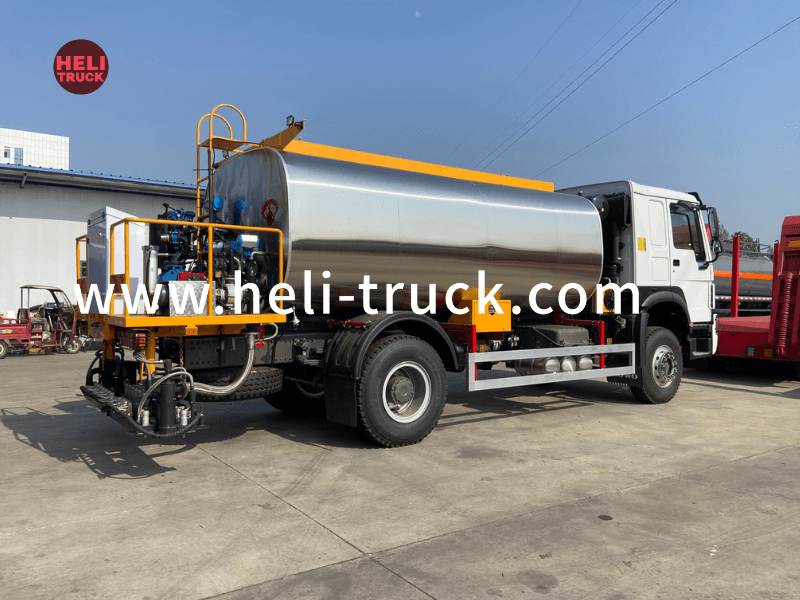Comparative Analysis of Garbage Compactor Truck Features

Introduction:
Garbage compactor trucks play a crucial role in waste management systems by collecting and compacting solid waste efficiently. With various types and models available in the market, it is important to compare their features to make an informed decision when selecting the most suitable option. This article provides a comprehensive analysis of different garbage compactor truck features to help municipalities, waste management companies, and other organizations choose the best option for their needs.
1. Types of Garbage Compactor Trucks:
There are several types of garbage compactor trucks available, including rear loader, front loader, and side loader trucks. Each type has its own set of features and benefits, making them suitable for different applications. Rear loader trucks are commonly used for residential waste collection, while front loader trucks are ideal for commercial and industrial waste collection. Side loader trucks are often used in areas with narrow streets or limited access. Understanding the differences between these types is essential when comparing their features.
2. Capacity and Compaction Ratio:
One of the key features to consider when comparing garbage compactor trucks is their capacity and compaction ratio. The capacity refers to the volume of waste that the truck can hold, while the compaction ratio indicates how efficiently the waste is compacted. Trucks with higher compaction ratios can reduce the number of trips required for waste collection, resulting in cost savings and increased efficiency. It is important to assess the capacity and compaction ratio of each truck to determine their suitability for specific waste collection needs.
3. Loading Mechanism:
Another important feature to consider is the loading mechanism of the garbage compactor truck. Different trucks may have rear, front, or side loading mechanisms, each with its own advantages and limitations. Rear loader trucks are commonly used for residential areas where waste bins are placed on the curb for collection. Front loader trucks are preferred for commercial and industrial applications, as they can easily lift and empty large dumpsters. Side loader trucks are useful in areas with limited access or narrow streets. Evaluating the loading mechanism is crucial to ensure efficient waste collection operations.
4. Hydraulic System:
The hydraulic system of a garbage compactor truck plays a critical role in the operation of the compaction mechanism. A reliable and efficient hydraulic system is essential for compacting waste effectively and minimizing downtime. When comparing trucks, it is important to assess the quality and performance of their hydraulic systems, including the type of pump, cylinders, and valves used. Trucks with robust hydraulic systems are likely to have higher compaction efficiency and lower maintenance requirements, making them a more cost-effective choice in the long run.

5. Safety Features:
Safety is paramount in waste management operations, and garbage compactor trucks should be equipped with various safety features to protect operators and the public. Key safety features to look for when comparing trucks include backup cameras, blind-spot monitoring systems, warning alarms, and emergency stop buttons. Trucks with advanced safety features can help prevent accidents, reduce injuries, and improve overall operational safety. Evaluating the safety features of each truck is essential to ensure compliance with regulations and best practices in waste management.
6. Control Systems and Automation:
Modern garbage compactor trucks are equipped with advanced control systems and automation features to enhance operational efficiency and convenience. These systems may include onboard computers, GPS tracking, route optimization software, and remote monitoring capabilities. Trucks with sophisticated control systems can streamline waste collection operations, improve route planning, and provide real-time data for performance analysis. When comparing trucks, it is important to assess the control systems and automation features to determine their impact on operational efficiency and cost-effectiveness.
7. Maintenance and Serviceability:
Regular maintenance is essential to ensure the optimal performance and longevity of garbage compactor trucks. When comparing different models, it is important to consider their maintenance requirements and serviceability. Trucks that are easy to maintain and service can help minimize downtime and reduce overall operating costs. Factors to consider include access to key components, availability of spare parts, and ease of maintenance procedures. Choosing a truck with good maintenance and serviceability features can contribute to a more reliable and cost-effective waste management operation.
8. Environmental Considerations:
Environmental sustainability is a key concern in waste management, and garbage compactor trucks should be designed with eco-friendly features to minimize their impact on the environment. When comparing trucks, it is important to consider their fuel efficiency, emissions control systems, and recycling capabilities. Trucks with lower emissions and reduced fuel consumption can help reduce greenhouse gas emissions and air pollution. Additionally, trucks equipped with recycling capabilities can promote waste diversion and support circular economy initiatives. Evaluating the environmental considerations of each truck is crucial to align with sustainability goals and regulations.
https://www.heli-truck.com/729/ :
Garbage compactor trucks play a vital role in waste management systems, and selecting the right truck with the best features is essential for efficient and cost-effective waste collection operations. By comparing the capacity, compaction ratio, loading mechanism, hydraulic system, safety features, control systems, maintenance, serviceability, and environmental considerations of different trucks, organizations can make informed decisions that meet their specific waste management needs. Investing in a garbage compactor truck with advanced features and capabilities can lead to improved operational efficiency, reduced costs, and enhanced environmental sustainability in waste management practices.
